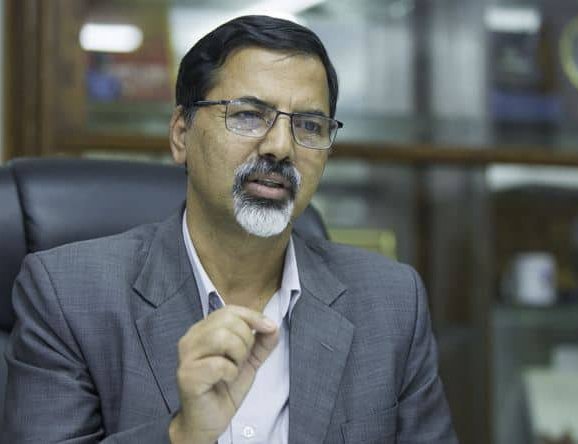
With the upsurge of COVID-19 cases worldwide, demand for Nepalese workers and products in foreign countries has drastically declined. However, Nepal’s import continues to grow. This has resulted in a negative BoP trend.
For the last two decades in general, Nepal’s balance of payment never saw any negative trend due to the flow of remittance coming from Gulf and other destinations including Malaysia.
The white paper presented by the government paints this bleak scenario of the national economy. Presenting the white paper at the Federal Parliament, Minister for Finance, Janardan Sharma said that the national coffer has a deficit of Rs 143 billion. Addressing the parliament, the finance minister has also announced that this government would present a new budget.
Nepal's balance of payment (BoP) went on a deficit in the last fiscal year 2021 by Rs. 15.25 billion as imports surged while the BoP in the preceding fiscal year of 2019/20 was in a surplus by Rs. 282 billion.
Similarly, central reserve fund has also been in a deficit by Rs. 146 billion in the last fiscal year whereas it was in a deficit by only Rs. 43 billion four years ago.
“I am not making any accusation against the previous government and the data mentioned in the whitepaper has not been manipulated,” said Sharma replying to queries made by the lawmakers in parliament.
Sharma said that the presented document was not for a revenge against the previous government but it is the mirror of the country’s economy. Sharma also expressed his skepticism about the vaccination drive launched by the previous government. “I have thoroughly studied the number of the imported vaccines and the actual number of people vaccinated, which shows that the statistics is not as per the one presented by the previous government,” he said.
‘Baseless’ White Paper
However, former finance minister Bishnu Poudel has termed the white paper presented by the government in parliament as a baseless document aimed at tarnishing the image of the former government led by KP Sharma Oli.
Former minister Poudel accused the government of bringing the whitepaper only for objecting to the previous government’s works. “Although the white paper presents information about the current economic condition of the country, it is more focused on criticizing the works of the previous government,” said Poudel.
He said that the whitepaper presented in parliament a few days ago by Finance Minister Janardan Sharma has largely ignored the adverse impacts of COVID-19 on the national economy.
However, those who have been watching Nepal’s trade scenario see the present scenario as natural, pointing out to Nepal’s growing trade deficit with various countries due to lack of products to export.
Tourism and remittance are two major areas contributing to bring balance of payment in Nepal’s favor. Following the pandemic, both these sectors suffered badly reducing the earning.
Last fiscal year, Nepal had a trade deficit of Rs.1016.62.
According to the trade statistics of the Department of Customs, the country’s trade deficit has increased by 12.49 per cent to Rs. 1,016.62 billion during the first nine months of the current fiscal year.
High growth in import has led to the widening trade deficit. The trade deficit had reached Rs. 903.71 billion in the corresponding period the previous year.
Nepal has had foreign trade with more than 152 countries during this period, with the biggest share of trade and deficit with India.
According to statistics, the country imported goods worth Rs. 724.94 billion from India in the last nine months.
Exports during the review period stood at Rs. 68.43 billion. Nepal’s trade deficit with India has reached Rs. 656.51 billion.
During the review period, goods worth Rs. 164.13 billion were imported from China while export amounted to only Rs. 796 million.
Nepal’s trade deficit with China is now Rs. 163.33 billion.
As imports and exports have increased during the period compared to the same period previous year, the overall foreign trade and trade deficit also increased significantly, the report said.
The total foreign trade volume has increased by 13.64 per cent to Rs. 1,206.16 billion in the first nine months of the current fiscal year.
According to the statistics, import of goods has increased significantly. Goods worth Rs. 1,111.39 billion have been imported till mid-April this fiscal year. This is higher by13.12 per cent than the same period last year.
During the same period last year, Nepal imported goods worth Rs. 982.53 billion in nine months. Nepal imported goods worth Rs. 168 billion from mid-March to mid-April. This is the highest volume f import in a single month of the current fiscal year.
Meanwhile, Nepal’s export trade has increased by 20.23 per cent to Rs. 94.76 billion during the review period.
With the increase in exports, its contribution to total trade also risen from 7.62 per cent to 8.42 per cent during the review period.
The share of imports in foreign trade is 92.14 per cent and the share of exports is only 7.86 per cent.
Given Nepal’s current trend of import and declining foreign currency from tourism and remittances, the BoP is unlikely to be in Nepal’s favor.
- FOREIGN EXCHANGE: Largest Deposit
- Jul 22, 2024
- IMF: Approval Of SDR
- Jul 22, 2024
- NEPAL-KOREA RELATIONS: Fifty-Years Of Warm Relations
- May 31, 2024
- NEPAL-BRITAIN: Centenary Celebration
- May 31, 2024
- POLITCS: Forming New Alliances
- May 27, 2024
















